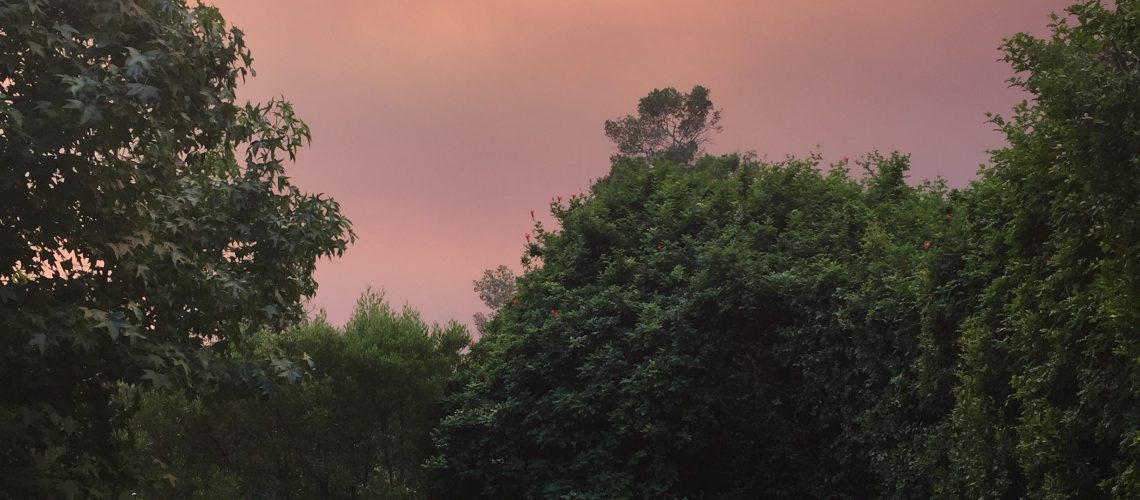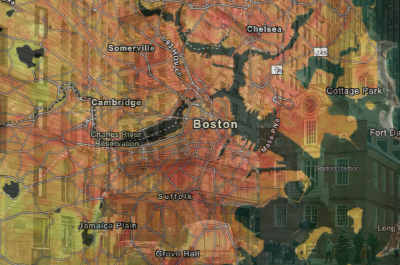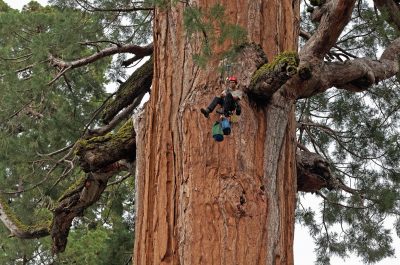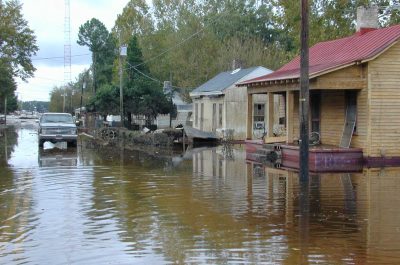And not just everyday heat. In big cities, from coast to coast, #ISeeChange observers have been dealing with extreme heat. Carlos Jusino reports from New York: “My cell phone battery staying at 99% all day would be fantastic!! The temperature at 99-degrees all day in NYC however not so much,” he writes. “I wish the temperature was dropping as quickly as my battery.”
On the other coast, Dorrit Ragosine says it’s just as bad: “When I first moved to Los Angeles excessive heat was a rarity and during only the summer months.” Not so much anymore, she says. That heat “is now commonplace and extends throughout the year. I never used air conditioning before. Now I have to.”
Chicago, Los Angeles and New York all saw incredibly high temperatures last week, sharing simultaneous heat wave alerts for the first time in more than a decade. Philadelphia, St. Louis, Kansas City, Phoenix, and the Twin Cities have been under heat watch too. In recent days, Hartford and Boston have joined the hot town club…and look out, Washington, D.C., because high temperatures have again arrived in our nation’s capital.
A pretty clear climate signal seems to be behind these waves of heat breaking across the country. Each year, the American Meteorological Society reviews scientific literature that assesses the role of climate change in extreme weather events (and those annual reviews are getting longer, as more studies come in). Over the four most recent years, 21 of 22 papers addressing extreme heat found the changing climate made heat events worse, more frequent – or both.
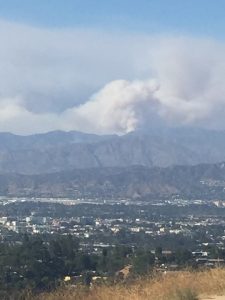 And in Southern California last weekend, extreme heat collided with flame. In the hills of Santa Clarita near the 14 freeway, the Sand Fire has burned more than 38,000 acres of land so far, and is about 65% contained. While the spark that set it off was likely arson, the drought conditions making the landscape so vulnerable to fast moving fire were likely made worse by climate change.
And in Southern California last weekend, extreme heat collided with flame. In the hills of Santa Clarita near the 14 freeway, the Sand Fire has burned more than 38,000 acres of land so far, and is about 65% contained. While the spark that set it off was likely arson, the drought conditions making the landscape so vulnerable to fast moving fire were likely made worse by climate change.
Observer Heather T. Roy headed to the movies last Saturday to avoid bad air quality and high temperatures in Los Angeles. But the heat wave wasn’t as intense as she expected for mid-afternoon – and the smoke from the Sand Fire was making the sky look weird – so she snapped a picture along Sunset Boulevard. “I’ve never seen the sky look like this in the city.” Some call it a silver lining: smoke from wildfire doesn’t just blur the sun into a dull orange disc. It also can block solar radiation, which matters in the Los Angeles Basin where winds, and their absence, permit smoke particulate to stick around, as it did on Saturday.
Impacts of severe heat are easy to find all around American cities this summer – and not just in the number of movies an average Angeleno takes in during a weekend. (For the record, it was three.) In New York, Liz Barry reports that heat makes it harder to think and function. “It reached 89 degrees in my house yesterday, and to be able to continue working, I turned on my AC,” she wrote.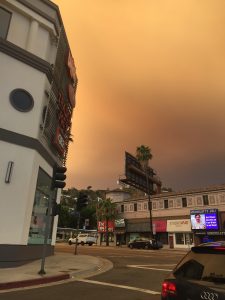
In fact, how we’re coping with heat may carry its own consequences. Air conditioning is getting more popular not just in the United States but in middle-income countries around the world – think Mexico – and that’s raising energy demand. Researchers from California and Arizona looked at how climate and income drive peoples’ decisions to adopt air conditioning. They say developing countries like China and India are next, so that the warmer parts of the planet will be well-saturated with air conditioning within a few decades. And that raises concerns about the reliance of air conditioners on hydrochlorofluorocarbons (HCFCs). This class of chemical compounds that replaced widespread chloroflurocarbons two decades ago can destroy the ozone layer if they end up in the stratosphere.
Risks of air conditioning are one reason Secretary of State John Kerry recently told an audience in Vienna that climate negotiations are as important as fighting ISIS, because curbing HCFCs “has the ability to literally save life on the planet itself.”
ISeeChange, along with AdaptNY and WNYC, is interested in how people in East Harlem are managing their heat exposure. This heat wave in New York is the longest on record since 2013 – and AdaptNY has put together a list of the longest heat waves ever recorded in New York. (Let’s just say we’re glad we weren’t around in August-September of 1953.)
ISeeChange is all about gathering observations from people like you – hearing about urban heat or other strange goings-on in your environment. There more people we hear from – and the more images we gather, the more useful and insightful our collective observations become. Come on and complain about your weather to us. You’ll be in good company.

